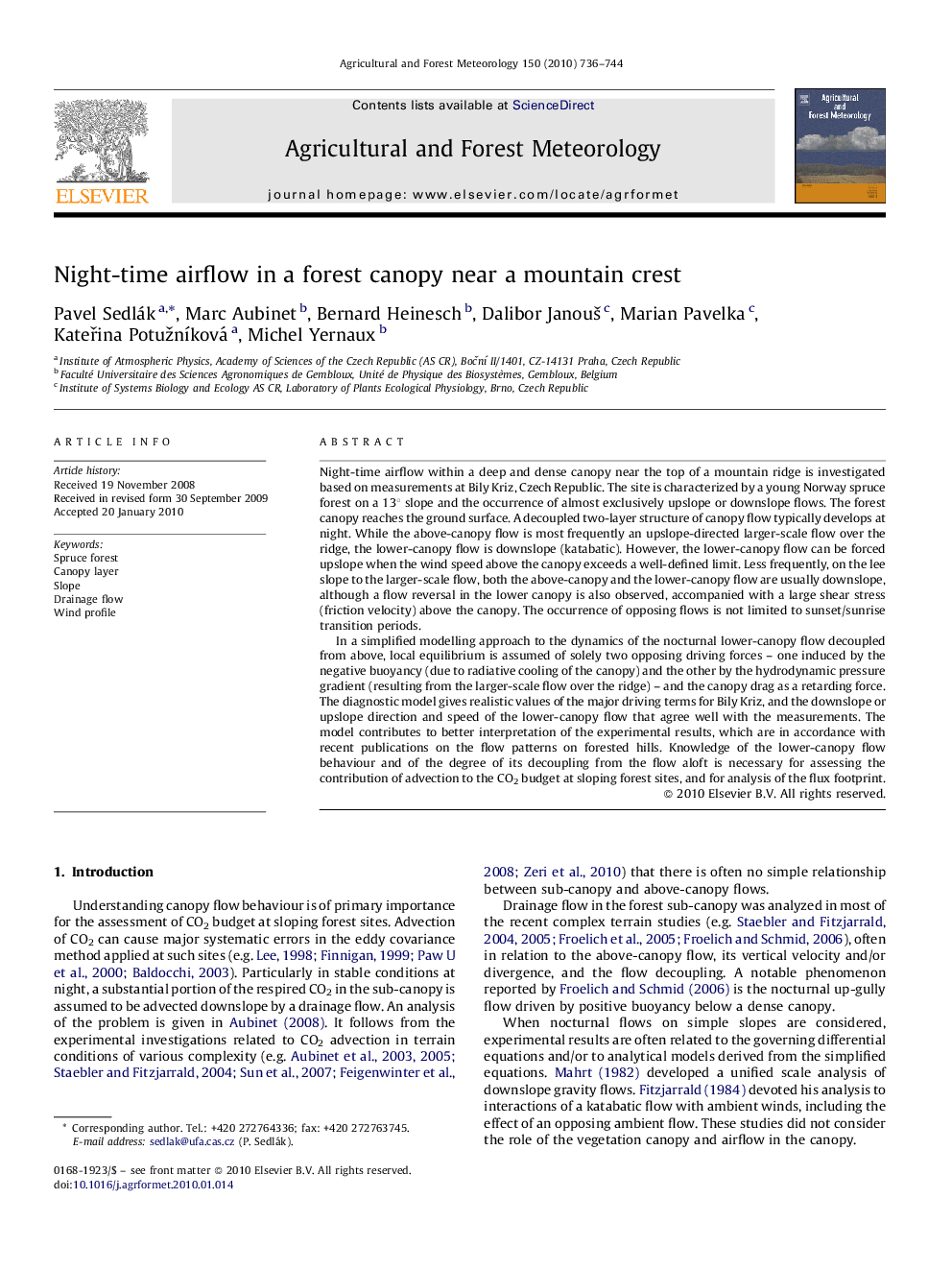| Article ID | Journal | Published Year | Pages | File Type |
|---|---|---|---|---|
| 82256 | Agricultural and Forest Meteorology | 2010 | 9 Pages |
Night-time airflow within a deep and dense canopy near the top of a mountain ridge is investigated based on measurements at Bily Kriz, Czech Republic. The site is characterized by a young Norway spruce forest on a 13° slope and the occurrence of almost exclusively upslope or downslope flows. The forest canopy reaches the ground surface. A decoupled two-layer structure of canopy flow typically develops at night. While the above-canopy flow is most frequently an upslope-directed larger-scale flow over the ridge, the lower-canopy flow is downslope (katabatic). However, the lower-canopy flow can be forced upslope when the wind speed above the canopy exceeds a well-defined limit. Less frequently, on the lee slope to the larger-scale flow, both the above-canopy and the lower-canopy flow are usually downslope, although a flow reversal in the lower canopy is also observed, accompanied with a large shear stress (friction velocity) above the canopy. The occurrence of opposing flows is not limited to sunset/sunrise transition periods.In a simplified modelling approach to the dynamics of the nocturnal lower-canopy flow decoupled from above, local equilibrium is assumed of solely two opposing driving forces – one induced by the negative buoyancy (due to radiative cooling of the canopy) and the other by the hydrodynamic pressure gradient (resulting from the larger-scale flow over the ridge) – and the canopy drag as a retarding force. The diagnostic model gives realistic values of the major driving terms for Bily Kriz, and the downslope or upslope direction and speed of the lower-canopy flow that agree well with the measurements. The model contributes to better interpretation of the experimental results, which are in accordance with recent publications on the flow patterns on forested hills. Knowledge of the lower-canopy flow behaviour and of the degree of its decoupling from the flow aloft is necessary for assessing the contribution of advection to the CO2 budget at sloping forest sites, and for analysis of the flux footprint.
